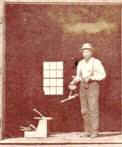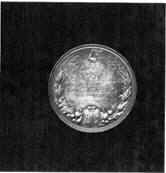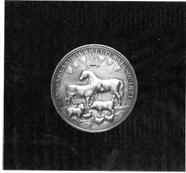Updated Biography of Henry Law Watts
- Lee Liles and Donald E. Watts
- Jan 10, 2018
- 5 min read
ORIGINS Historical Research
Donald E. Watts E - ORIGINS@frontier.com H - 304-725-0571 C - 304-676-7034
Updates by Lee Liles
Here is an updated biography, the second, on Henry Law Watts. Many thanks go out to
Lee Liles owner of the National Museum of Horse Shoeing Tools and Hall of Honor, Sulphur, Oklahoma.
HENRY LAW WATTS
(1826 – 1887)
Henry Law Watts, St. Peter, Nicollet County, Minnesota, ca. 1880
Henry Law Watts was born 9 August 1826 in Worthington, Hampshire County, Massachusetts and baptized in the Congregational Church 13 May 1827. His parents, John Watts, Junior and Philura ("Lury") Anable Watts, had fifteen children. Henry is the next to the youngest male child, Osmyn being the youngest. Since there are two children that have not been found, likely stillborn or died young, Henry may be known as the eleventh child.
Henry married Nancy Celestia Bemis, of Chester, Hampshire County, Massachusetts, probably in 1849. Nancy was the daughter of Joseph Bemis and Betsey Cole Bemis. She was born 28 January 1835.
Henry and Nancy had ten children; they were born in Springfield (Julia Ann, 1850; Willie E., 1856; Nettie J., 1858), Worthington (Jason B, 1852), South Hadley (John Henry, 1855), Northampton (George Washington, 1862), Amherst (William Irving, 1863) and Hadley (Edna L., 1870; Ada Norma Eliza, 1877). There is a tenth child, name unknown.
Henry was a blacksmith, probably all of his adult life. He lived in Massachusetts, and had businesses in a number of the following places, all of which are in Massachusetts, except for two:
1850 Springfield 1852 Worthington 1855 South Hadley 1856 Springfield 1857, May - 1858, May, Franklin Street, Springfield [Blacksmith] 1858, May – 1859, May, West Worthington Street, Springfield [Blacksmith] 1859 Chester 1861 East Street, Amherst 1862 North Street, Amherst 1862 Northampton 1863 Amherst 1865 Hadley and Amherst 1870 and 1877 Hadley 1880 – 1881 3rd Street, St. Peter, Nicollet County, Minnesota (here, Henry had a joint business with his son, George Washington Watts: WATTS & SON, HORSESHOERS) 1884, July – 980 Main Street, Hartford, Hartford County, Connecticut [Blacksmith] 1886 - 1887 South Street, Hadley
There is, of course, much more to find out about Henry and his wife, and that will happen with time. Here is what we positively know about him.Henry accidentally died by drowning in the Connecticut River at Hadley, 15 May 1887, around 6:00 PM:
Headline: Hampshire County. Special Announcement; Article Type: News/Opinion; Paper: Springfield Republican; Date: 05-16-1887; Page: 6; Location: Springfield, Massachusetts
DROWNING AT HADLEY Henry L. Watts, formerly living in this city and proprietor of a blacksmith-shop on South street, was drowned in the Connecticut river at Hadley about 6 o’clock last evening. He rowed out into the stream to secure a barrel he saw drifting, and in leaning over the edge of the boat was capsized. The craft drifted away from him and he struck out for shore, but was drowned a short distance from the bank in sight of his wife. Mr. Watts moved to Hadley a year ago, where he bought a place, built a blacksmith-shop and did a good business. He was a successful inventor, and sold a device for making horse-shoes. He was a member of the Methodist church and leaves a widow and four children. Of his sons, John Watts has a blacksmith-shop at Amherst and William is in the employ of the Dickinson Bros ad Hadley. A daughter, Edna, is the wife of Frank H. Gilligan of this city, and a younger daughter lives at the Hadley home. Men were dragging the river last evening to recover his body.
Headline: Hampshire County. Ware. Important Real Estate Sales; Article Type: News/Opinion; Paper: Springfield Republican; Date: 05-18-1887; Page: 6; Location: Springfield, Massachusetts The body of H. L. Watts, who was drowned at Hadley Sunday, was found by his son yesterday morning. The funeral will be held today.
Henry made application for four U.S. Patents and all four were issued:
(1) Horseshoe Machine, Patent 24,596; Issue Date: June 28, 1859; Current U.S. Class: 59/52; 59/54. "…a new and useful Improvement in Machinery for Making Horseshoes…" and,
(2) Horse-Detacher, Patent 241,169; Issue Date: May 10, 1881; Current U.S. Class: 278/28. "The object of this invention is to provide a simple and effective means whereby a horse can be instantly released from the vehicle to which he is attached at the option of the driver." This patent was assigned by Henry to Theodore G. Carter for a reason that is unknown.
(3) Hoof Parer, Patent 241,170; Issue Date: May 10, 1881; Current U.S. Class: 30/185. "The object of this invention is to provide a farrier’s tool for preparing the hoof of a horse for the reception of the shoe." (In the picture of Henry Law Watts, above, Henry is holding the Hoof Parer and a Hoof Parer is situated on his tool box.)
(4) Horseshoe, No Model, Patent 246,928; Issue Date September 13, 1881; Current U.S. Class: 168/11 168/12 168/26. "…have invented certain new and useful Improvements in Horseshoes…The object of this invention is to produce a horseshoe that can be readily adapted for light or heavy draft and be suited to any road or weather without removing the shoe from the foot…"
Nancy married Carlo Bemis of Paxton, Massachusetts, the following year, 1888. This was Carlo’s second marriage; his first wife died in 1887. Carlo died November 1904; he and Nancy had no children. Nancy died in April 1910 in Windsor, Hartford County, Connecticut and was buried with Henry and their youngest daughter, Ada Norma Eliza, in Hadley, Massachusetts.
24 April 1910, page 14, Windsor, CT. The death of Mrs Clestie [sic] Bemis, 76, occurred at the home of her grandson Henry W. Watts of Pierson lane [Windsor, Connecticut], on Thursday [21 April 1910], from diseases incidental to old age. She was a native of Chester, Mass. The funeral was held yesterday [23 April 1910] morning from the undertaking rooms of Merwin & Leek, and the body was taken to Hadley, Mass, for burial., Springfield Republican, Springfield, Hampden County, Massachusetts.
In January 2012, Henry’s great great grandson, Donald Eugene Watts, found Henry’s "Watts’ Patent Acme Shoe" case at the National Museum of Horse Shoeing Tools and Hall of Honor, owned and operated by Lee Liles, National Museum of Horseshoeing Tools and Hall of Honor, 7781 US HWY N 177, Sulphur, OK 73086-9656. According to the display information included in the lid of the box, Henry was awarded two Silver Medals by the New England Agricultural Society (date not specified, but we may assume that it was after 13 September 1881, the date that Henry received the patent for his horseshoes). The New England Agricultural Society, formed in 1864 and ceased operations in 1906, was organized to encourage the improvement and growth of the food and agriculture industry in the New England States. The obverse features farm animals along with the State Seals of each of the New England States: Connecticut, Rhode Island, Maine, Massachusetts, New Hampshire, and Vermont.
An example of the silver medal (seen above) is in the Decorative Art Collections, Herbert F. Johnson Museum of Art, Cornell University.
The URL is:http://library24.library.cornell.edu:8280/luna/servlet/detail/CORNELL~1~1~27729~97002480:New-England-Agricultural-Society
William E. Barber (1807-1879), the artist of the medal, was born in London and learned engraving from his father, John. He worked as die engraver in London before immigrating with his family to Boston in 1852. He was hired by Gorham Company as a die engraver for ornamental embossing of silver plate. Barber was hired as the assistant engraver at the United States Mint in Philadelphia in 1865 and was promoted to head engraver in 1869. The medal was minted by the US Mint in Philadelphia.





Comments